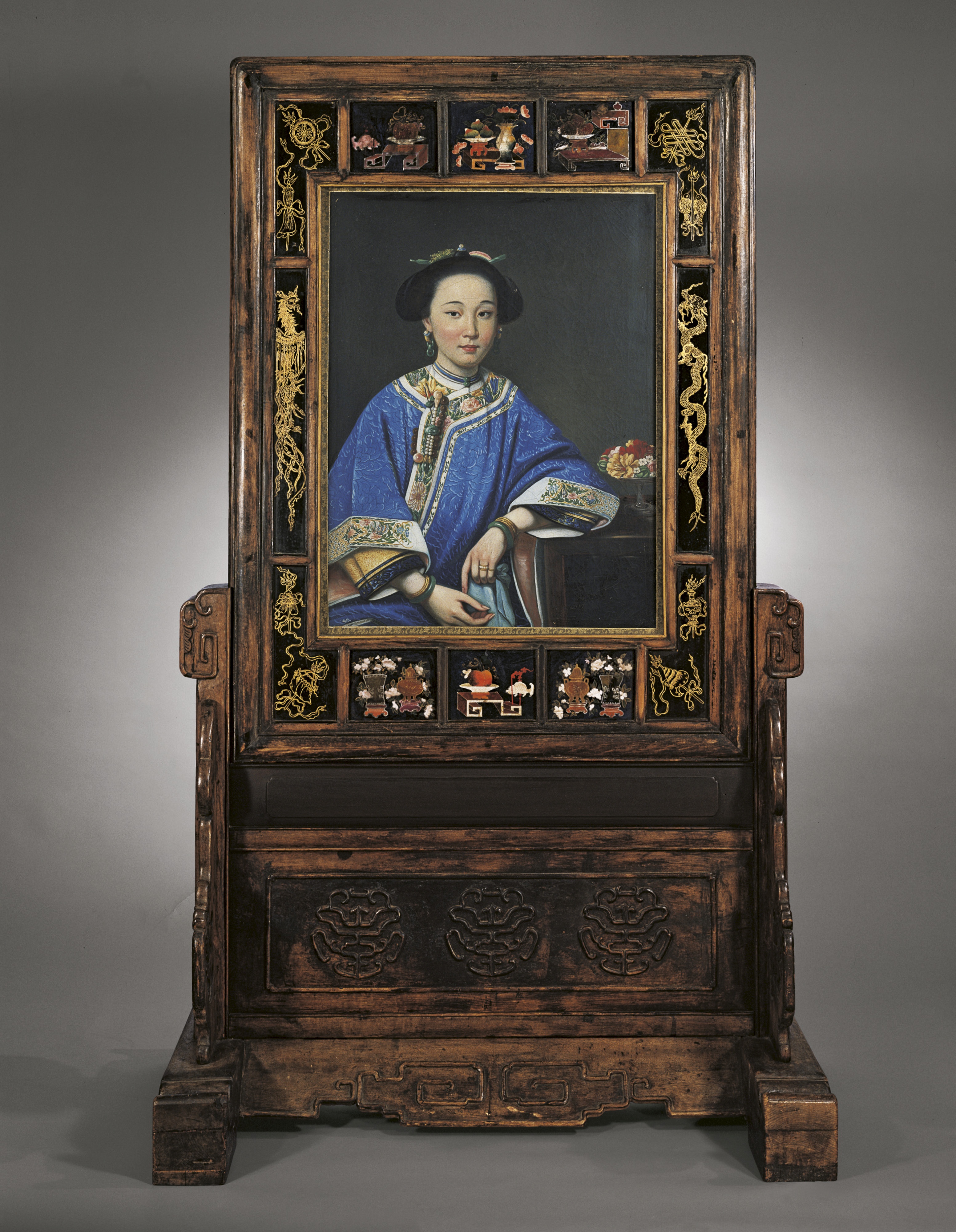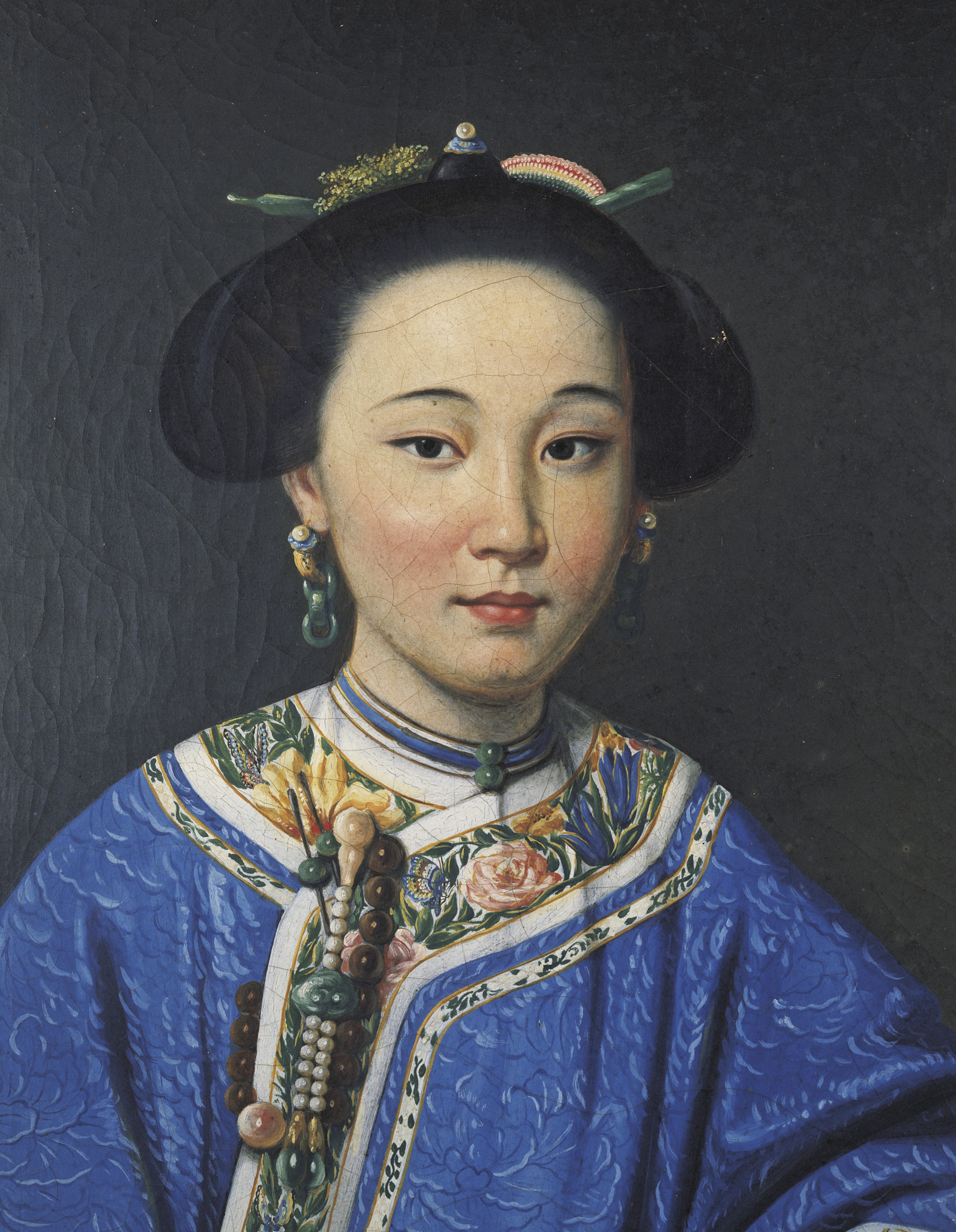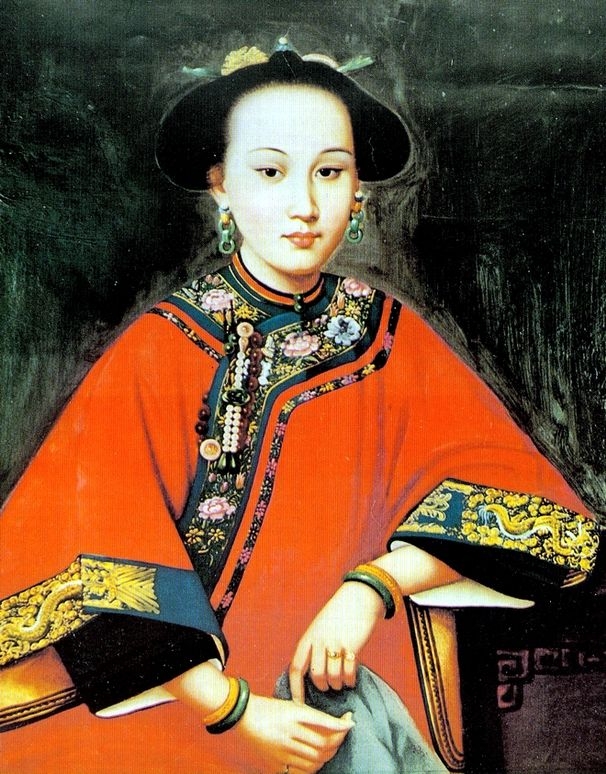Connoisseurship
Rufus Jiaan Chen

Figure 1. Giuseppe Castiglione (in the style of Lang Shining), The Fragrant Concubine, Qing Dynasty (18th-19th Century), Oil on canvas, Sotheby’s Hong Kong.
Connoisseurship is the expertise of judging a work of art in terms of its authenticity, origin, period and style. Connoisseurs are thought to be formalists: through physical examination, they propose attributions, distinguish genuine works of artists from copies and forgeries, and aim to date works within a chronology.1 Their approach differs from social art historians, since connoisseurs take an almost scientific approach to authentication, and rarely consider the work in its social context. Although connoisseurship is often seen to serve the commercial aims of the art market, the skills of the connoisseur—such as “a practiced eye, visual memory, sensitivity to quality, and an ability to recreate the creations of artists”—are nevertheless essential to art history.2 Connoisseurship ultimately benefits art history since it authenticates materials as a foundation for further historical interpretation. Art historians often build on what connoisseurs have determined, to embark on their own arguments within a larger social and historical context.
Auction house specialists are often trained as connoisseurs, to distinguish the aesthetic quality of artworks, and to establish a monetary value for them. For example, Sotheby’s Auction House in Hong Kong offered a painting identified as The Fragrant Concubine by Giuseppe Castiglione in the style of Lang Shining on October 5, 2011 [Figure 1]. It was impossible to identify the authorship of the painting immediately due to the lack of a valid signature or seal stamp of the artist.3 Therefore, a specialist was needed to examine the painting in order to catalog it appropriately. The woman in the painting provides several clues to suggest her identity: her blue robe covered in an intricate peony pattern drapes naturally, while her precious jade, pearl and gold jewelry compliment her elaborate attire.

Figure. 2. Detail of The Fragrant Concubine.
The golden sleeves of her under-tunic [Figure 2] subtly reveal her imperial status since the wearing of gold fabric was strictly limited to the emperor and his family.4 Moreover, this painting does not belong to the regular category of Chinese painting, since literati paintings, the traditional style of courtly Chinese painting, would include neither perspective nor anatomical accuracy since they emphasized shen (the spirit) of the subject matter.5 The depiction of the sitter in the painting contradicts the core of the literati school by representing precise proportions of the human body, which indicates the artist of is either a Westerner or trained in Western painting techniques.

Figure. 3. Unknown artist, Portrait of a Young Woman in a Red Dress, Qing Dynasty 18th-19th Century. Oil on canvas, Collection of Madame Chiang Kai-shek
Because few female subjects in Chinese paintings have been discovered, this painting was easily attributed to a small group of works that portray a young lady with pale white complexion and rosy cheeks.6 One such painting [Figure 3] attributed to Jesuit missionary painter Giuseppe Castiglione7 (1688-1766) in the collection of Madame Chiang Kai-Shek (1898-2003) is said to have been commissioned by the Qianlong Emperor (1711-1799) for his favorite consort, the Fragrant Concubine.8
The lady in a red robe depicted in Madam Chiang Kai-Shek’s painting has facial features similar to the lady portrayed in the painting offered at Sotheby’s, and the sitters in the two portraits are rendered in the same manner with a highly comparable side table. Despite the Western influence and clear aesthetic quality of the painting, no solid evidence ultimately confirms the author of these paintings to be Castiglione. Therefore, when the Sotheby’s specialist Hajni Elias cataloged this piece, she explained that The Fragrant Concubine was similar to Castiglione, based on formal similarities such as the shading in the face and the details of her outfit to other paintings by the artist, and ultimately determined it was done by one of Castiglione’s followers.9 This type of stylistically informed attribution is indeed typical in the work of a connoisseur. In this case, the connoisseur has done her duty in identifying the sitter, while the author of the painting remains an educated proposal. Art historians can now further investigate the provenance of The Fragrant Concubine, and utilize this work as an example to explore the broader social significance of Giuseppe Castiglione and the artworks he produced.
Footnotes
- David Carrier, “In Praise of Connoisseurship,” The Journal of Aesthetics and Art Criticism 61:2 (Spring 2003) 160.
- David Ebitz, “Connoisseurship as Practice,” Artibus et Historiae 9:18 (1988): 160
- In an East Asian context, a seal is often used in lieu of signatures in art or any object requiring acknowledgement or authorship. For further reference on this topic, please see R. H. Van Gulik, Chinese Pictorial Art as Viewed by the Connoisseur (New York: Paragon Book Gallery, 1958).
- Ho Chuimei, and Bennet Bronson, Splendors of China’s Forbidden City: The Glorious Reign of Emperor Qianlong (London: Merrell, 2004), 60.
- Cécile Beurdeley and Michel Beurdeley, Giuseppe Castiglione: A Jesuit Painter at the Court of the Chinese Emperors (London: Charles E. Tuttle Co., 1971), 147.
- Beurdeley and Beurdeley, 100.
- Nie Chongzheng, “Lang Shining or Giuseuppe Castiglione, an Italian Painter at the Qing Court,” in Ho and Bronson, Splendors of China’s Forbidden City, 168. Nie explains that Giuseppe Castiglione adopted a Chinese name Lang Shining, and served at the Qing court for over fifty years where he established his entire artistic career. Thus, his art should be recognized as an integral part of Chinese painting history.
- Hajni Elias, “Mysterious Portrait of a Chinese Lady,” Sotheby’s. Last modified October 5, 2011. http://www.sothebys.com/en/auctions/ecatalogue/2011/fine-chinese-ceramics-and-works-of-art-hk0363/lot.1952.html
- Ibid.
